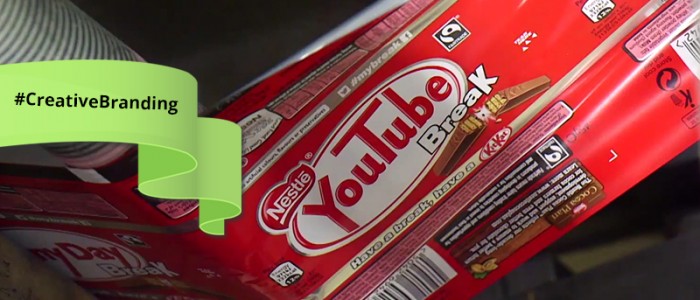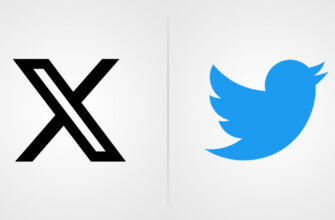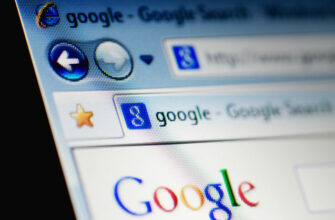Welcome to our Creative Branding series of posts – your one-stop portal for all the latest happenings in the design world and what they mean for the industry as a whole. Where marketing and designing come together. It’s a place to let lose your design wisdom and industry insights from professionals who live, breath and eat design and to uphold the importance of branding throughout. We’ll be focusing on and discussing the most popular (and unpopular) design trends in the Creative Branding, with the best responses from industry stalwarts getting featured on our blog.
We ask a question. Our panelists answer. Simple does it.
- João Garzón de Albuquerque, Founder & CEO at Workaboutdesign, always looks for the deeper meaning behind design.
- Henk C. Meerhof, specialist in visual communication and independent designer. He has an eye for design and has been in the business for a decade.
- Eileen Wu, Technical Solutions Consultant, takes a look at things from a matter-of-fact point of view.
- Sean B. Jamshidi, Founder and Creative Director at DesignFacet, deconstructs the co-branding phenomenon with a design, marketing and aesthetical standpoint.
So let’s get to the question of the day.
Co-Branding. Worth the effort? Or a waste of potential?
Brands want to be behemoths. And the marketing folks want to push the envelope when it comes to making brands seize the conversations around them.
What better way to make your brand a bigger star than by partnering with another brand and reaping the riches both ways? A confluence of interests? A partnership to enhance market share? That’s co-branding for you, a phenomenon that the design and marketing world is increasingly tapping into for a variety of benefits that it affords brands.
Do brands opt for co-branding to gain a wide demographical outreach? A means to reenergize and kick start brands in a market where it’s tougher to compete? Let us take a look at one such example of co-branding by two market leaders and what professional designers and industry experts have to say about it.
Kitkat (Nestle) + YouTube (Google) – Co-Branding
Hot on the heels of the earlier collaboration between Google and Nestle for Android and KitKat (they named an Android OS update as KitKat), the two companies saw how fruitful their last co-branding had proved to be. They’ve partnered up again, this time for KitKat and YouTube, or YouTube-Kitkat!
The end result of their collaboration? KitKat the chocolate bar will now go by the name ‘YouTube Break’.
Marketing gimmick? Stroke of genius? Or something in between?
We asked our panelist.
Our second panelist, João Garzón de Albuquerque, Founder & CEO at Workaboutdesign, wanted to offer his insights as a design thinker on the recent collab:
Hardly nasty. KitKats can’t be that. But… and here is the now, the concept tastes past new, in my view, it is definitely not adding much to both brands, in one side you have KitKat fans, and I am one since my early, not even teens, it was a no miss candy bar to bring back, every time any family member or friend of ours visited South Africa’s, Johannesburg, back still on Rowntree’s ownership days.
On the other side the youngster YouTube brand? Sorry but the KitKat eats the video tube alive, leaving not even crums to follow, it has been here since ever now, 1911? Too much to handle for YouTube without being perceived as “I am trying to be carried with”.
And then there’s the timing it is past the hype for YouTube to ride along a brand like Kitkat, eye to eye, and in the process make KitKat look hipster and techie.
Ok, now the targets, what is the aim here? What is Nestlé trying to get from this? New KitKaters? YouTube is “still” the reference to video post out there, yes. And that alone is the very reason why generation X, Millennial and even Baby Boomers, are all very much aware of it, while also are no strangers to this Nestlé brand either. I fail to see the strength, there is no punch here.
On YouTube brand side, the reach breaks me, ok the name looks cool on a known chocolate bar but… beyond brand awareness and what I’ve pointed above, tastes like a nice ride, no more, or perhaps lessens the brand to an intended everyday tech snack. A possible strength… to be as easy to post a video, as it is to bite a stripe of KitKat?
I certainly don’t want to be taken as harsh, it is just that we all have seen t-shirts using this same “formula” with brands like Coca-Cola, Ford, 7Up, Ferrari, etc.
This tastes better, I grant that, although Rowntree’s days are still better remembered, somehow that chocolate was something else, sorry Nestlé. Could be because of RSA chocolate.
Our first panelist was Henk C. Meerhof, specialist in visual communication and independent designer. He has an eye for design and has been in the business for a decade.
‘As first impressions are the only once we remember, I would not have removed the original KitKat from the logo on the form of the package. I think a stronger relation between the Nestlé product KitKat and Google’s YouTube could have been made by adding ‘YouTube break’ as ‘print over’ on the KitKat logo. It would have had more relation with the original pay off ‘have a break, have a KitKat’
Things as ‘Have a YouTube-break, look at KitKat’ slogans could point the audience towards special promotion videos on YouTube about KitKat.
I don’t have any experience with cross branding, as all low level idea’s the last marketing team I worked with where not approved by CEO’s. I’m interested in some data about cross branding though.
Without a doubt world heavy weights like Nestlé and Google can pull things like this off, what about smaller brands/companies and non-profits or even profit with non-profit.
‘Take a brake, share your KitKat?’
Even Eileen Wu, Technical Solutions Consultant, had a lot to say about the Yutube-KitKat Co-branding attempt and how it affected her as a consumer.
Cross-branding between KitKat and YouTube is a really interesting challenge! My initial reaction to this design was negative, to be honest. However, this is a tough pairing. The two brands come from completely different industries so it’s really hard to find some kind of connection. As a result, I’m just left scratching my head. I’m not sure how I would react if I saw this in a store. Maybe if they tried a blend of YouTube and KitKat branding, it might have a different effect. Another idea would be to use the KitKat name in the YouTube logo instead, since people will be looking for a KitKat – not a ‘YouTube’. I’m guessing they took the ‘use the same font’ approach instead of something more elaborate because they are banking on the KitKat branding being strong enough to overcome the difference in text. At the end of the day, the number of sales will determine the effect of this design. It definitely will make shoppers look twice!
Next up we have Sean B. Jamshidi, Founder and Creative Director at DesignFacet, on why the co-branding attempt by Nestle and Google fails to evoke a deeper meaningful response:
‘It’s all a useless promotional dance that is not well thought-out. It has nothing to do with sales or brand recognition. I seriously don’t think that my break time activities depends on eating a KitKat and watching YouTube Break on my mobile. This I only found out from watching a video, prior to that I had no clue what the packaging meant.’
The company that lost out in the advertising department is Google, because Nestle did not use the popular YouTube logo. If this branding is the result of thousands spend marketing both companies then I will politely take the chocolate and toss out the wrapping in the trash bin without giving this a second thought.”
So, What’s Your Take?
Some of the design and marketing folks think that the Nestle + Google’s recent effort lacks the zing that their previous collaboration did. Its making people scratch their heads, with some hailing this as a means for the consumer to ponder over the brand name. Some are calling the co-branded effort a confused hodge-podge of mistaken priorities.
No matter what anyone thinks, one thing is for sure. Co-branding demands some serious thought, when it comes to aligning the aims and appeal of the brand in order to attract the newer generations. The debate on this matter will carry on as big brands turn to co-branding as a means to revitalize their businesses.








